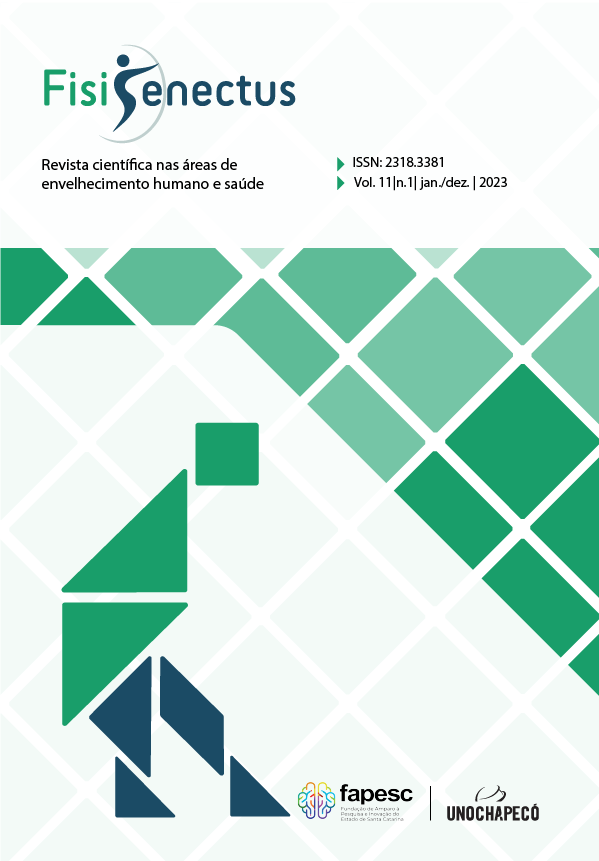Avaliação do risco de quedas em idosos comunitários após atendimento presencial ou por telerreabilitação
Risk assessment of falls in community-dwelling elderly individuals after in-person or tele-rehabilitation interventions
DOI:
https://doi.org/10.22298/rfs.2023.v11.n1.7823Keywords:
Telerehabilitation, Accident falls, ExerciseAbstract
INTRODUCTION: Telerehabilitation can reduce barriers to healthcare access and healthcare costs for society. Falls in the elderly represent a significant cause of hospitalizations, disability, and mortality, and physical exercise can reduce this risk of falls. OBJECTIVE: To evaluate the effect of a telerehabilitation protocol on the risk of falls in community-dwelling elderly individuals. METHODOLOGY: A clinical trial with two groups: in-person home-based care (GP) and telerehabilitation via video calls (GT), following the OTAGO protocol for fall prevention. Sociodemographic data, fall history, and risk factors were collected, along with functional tests and the mini-mental state examination, both before and after the intervention. Statistical analysis adopted p<0.05 as the level of significance. RESULTS: A total of 24 elderly participants took part, with 17 in the telerehabilitation group (GT) and 7 in the in-person group (GP). No statistical differences were observed in the initial characteristics between the groups (p>0.05). More than 60% of the participants reported falls in the last 12 months, both in GT (64.7%) and GP (66.7%). There was no significant difference in fall characteristics between the groups (p>0.05). A significant difference was found in the Functional Reach Test, where GT achieved an average of 26.70±8.75 cm, while GP achieved 13.94±3.13 cm after the intervention (p<0.05). CONCLUSION: Both modes of care were found to be satisfactory in reducing the risk of falls in the assessed elderly individuals.
Downloads
Downloads
Published
How to Cite
Issue
Section
License
Copyright (c) 2023 André Hillebrand Andriola, Thiago Dipp, Patrícia Martins, Karla Poersch, Murilo Santos de Carvalho, Ana Paula Karolczak

This work is licensed under a Creative Commons Attribution-NonCommercial-NoDerivatives 4.0 International License.
Aviso de Direito Autoral Creative Commons
Política para Periódicos de Acesso Livre
Autores que publicam na Revista FisiSenectus oncordam com os seguintes termos:
- Autores têm autorização para assumir contratos adicionais separadamente, para distribuição não-exclusiva da versão do trabalho publicada nesta revista (ex.: publicar em repositório institucional ou como capítulo de livro), com reconhecimento de autoria e publicação inicial nesta revista, exceto para publicação do artigo em outra revista/periódico científico.
- Autores têm permissão e são estimulados a publicar e distribuir seu trabalho online (ex.: em repositórios institucionais ou na sua página pessoal) a qualquer ponto antes ou durante o processo editorial, já que isso pode gerar alterações produtivas, bem como aumentar o impacto e a citação do trabalho publicado (Veja O Efeito do Acesso Livre).













